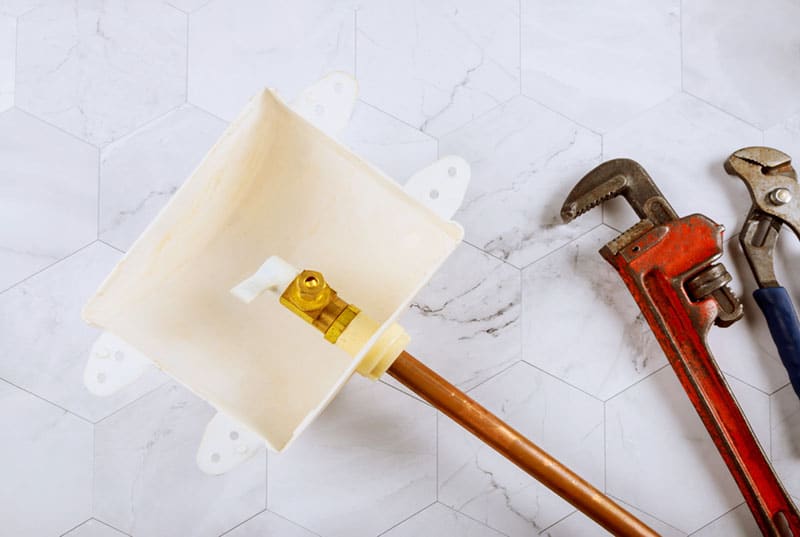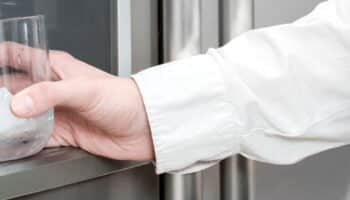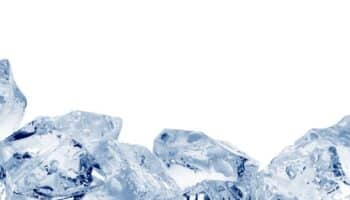We've independently reviewed this article to make sure it's as accurate as we can make it.
To find out more about our article creation and review process, check out our editorial guidelines.
There are many luxuries in life that we are all guilty of taking for granted regularly.
One of those luxuries is having ice and water within reach whenever we want. All we have to do is let our ice makers do their job. Unless, of course, they’re failing and not dispensing any water.
Check the filter first if your ice maker isn’t getting any water. A blocked water filter is a common cause of an ice maker not getting enough water. Also, check the ice maker’s water supply valve, water supply lines, and power.
In the following article, I’ll walk you through 4 simple steps to fix the common causes behind an ice maker not getting water. Here’s what you’ll need:
- An ice maker filter.
- A screwdriver.
- A hairdryer.
- Hot water.
- A washcloth.
Ready? Let’s dive in!
Why trust us? This article was written by Craig Anderson and Andy Fulenchek.
Craig has helped thousands of other homeowners repair their appliances since 2016.
Andy is one of our resident appliance repair experts with over a decade of experience. He currently runs his appliance repair company with a team of trusted technicians.
Why Your Ice Maker Isn’t Filling With Water
Many possible reasons can explain why your ice maker isn’t filling with water – from something as simple as an ice blockage to a more complex issue, such as a broken water valve.
To get a clearer idea of what might be the problem, it’s important to understand how your ice maker dispenses water. Typically, water enters from the wall and connects directly to the ice maker’s filter housing. Then, water travels through the filter and comes out filtered – afterward, the water heads to the water valve, which directs it to the dispenser.
Now that you know the basic journey of your ice maker’s water, here are the key things I recommend you check.
#1 Check the Filter
When your ice maker is not getting water, I recommend you check the filter. The filter plays a key role in how your ice maker works and how it dispenses water. Please ensure your ice maker has a water filter installed and that it’s in good condition.
After ensuring the filter is installed okay, you’ll want to check for blockages next. Just like the filter in your home’s heating and air conditioning system, ice maker filters require regular changing. Ideally, you should change the filter every 6 months (no longer than every 12 months). Changing the filter often helps ensure the water moving through the ice maker stays fresh and clean.
In the event that your filter has not been changed within the last 6 months to a year, it could be clogged. Once an ice maker filter has caught excessive debris, it will be unable to do its job, leading to clogs. Replace your existing filter with a brand-new one to solve the problem.
To replace the filter:
- Turn off the water and disconnect the line after the filter housing.
- Turn the water back on. If water flows, it indicates the filter isn’t clogged, and the housing is fine.
#2 Check the Water Supply Valve
When your ice maker is not filling with water, I recommend you check for leaks in the supply valve next. From what I’ve seen, there’s a copper or plastic line that runs to the refrigerator. The line is located at the back of the fridge. The water supply valve itself will be located either at the back of the refrigerator or beneath the kitchen sink.
Generally, a leak coming from the water supply valve is easy to identify. You’ll notice moisture around the valve and possibly even on the floor beneath the valve.

To rule out a false positive, and ensure your ice maker’s water valve works as it should, here’s how to test it:
- Close off the water valve.
- Remove the incoming water supply line at the refrigerator.
- Place the hose in a bucket to catch the water.
- Open the valve, and water should flow into the bucket.
- Turn the valve back off, reconnect the hose, and turn the valve back on.
- Check for leaks.
#3 Check the Water Supply Lines
If your ice maker is still not filling with water, my usual advice is to check the water supply lines next. The water supply lines may be kinked, or they could be frozen. Whatever the case, you’ll need to pull the refrigerator out from the wall to get behind it and easily access the supply lines.
You’ll likely need to remove the access panel on the back of the fridge to see all of the supply lines. Removing the panel is a very simple task that can be performed with a screwdriver. Once you have removed the access panel, check for any visible kinks in the supply lines.
Look for any signs of blockages as well, such as ice inside the line. If you notice that there’s an ice blockage and/or the line is frozen, the ice needs to be melted! A good way to tell whether there’s ice in your water supply lines is by blowing air through them and seeing if water comes out.
Once you’ve confirmed there’s ice in the lines, you can address the issue by unplugging the refrigerator and defrosting the freezer and fridge. The defrosting process will take several hours, and you’ll have to remove all the food inside your refrigerator and freezer.
Alternatively, you can try defrosting the water line manually. You’ll first want to unplug the fridge from its power source to do so.
You’ll need something warm to melt the ice, so get your hairdryer and gently blow warm air toward the frozen line. Just be careful not to send a ton of hot air into all of the surrounding components, and definitely don’t use anything stronger – like a heat lamp.
Once you’re done defrosting the lines, return the access panel, plug the refrigerator back in, and push it back into place. It’s time to test everything and see if everything’s back to normal.
In my experience, it will take a couple of hours before the ice maker will begin to produce ice.
#4 Contact a Service Repair Technician
If you’ve already tried everything and your ice maker is still not filling with water, it’s time to contact a professional refrigerator service repair technician. They can look at the unit, diagnose the problem, and repair it.
In many cases, when such a point is reached, it’s due to a faulty control board that’s rendering the ice maker unable to communicate with other components and request water. Ice maker control boards are complex, so you don’t want to try the repair yourself.
What Are the Replacement Cost Estimates?
Every component within your ice maker will have a different repair cost and vary significantly depending on your appliance’s brand and model. Here’s a quick table providing ballpark estimates.
| Filter and Housing | $200-$350 |
| Water Valve | $175-$300 |
| General Repairs | $175-$300 |
If you want to get any replacement part – or see how much one would cost – click to enter your model number in the search bar below. Our partners at AppliancePartsPros stock almost every part with free guides on how to install them.

Getting Water From Your Ice Maker
Hopefully, you can remedy the problem on your own with the troubleshooting steps above. Remember that when your ice maker is not filling with water, it’s not always due to catastrophic failure. In many cases, something as simple as defrosting frozen water lines will do the trick.
Thank you for reading. If this article was useful and answered your questions, please check out our other resources and free guides below and consider subscribing to our newsletter.
Have a great day!
-Craig.







